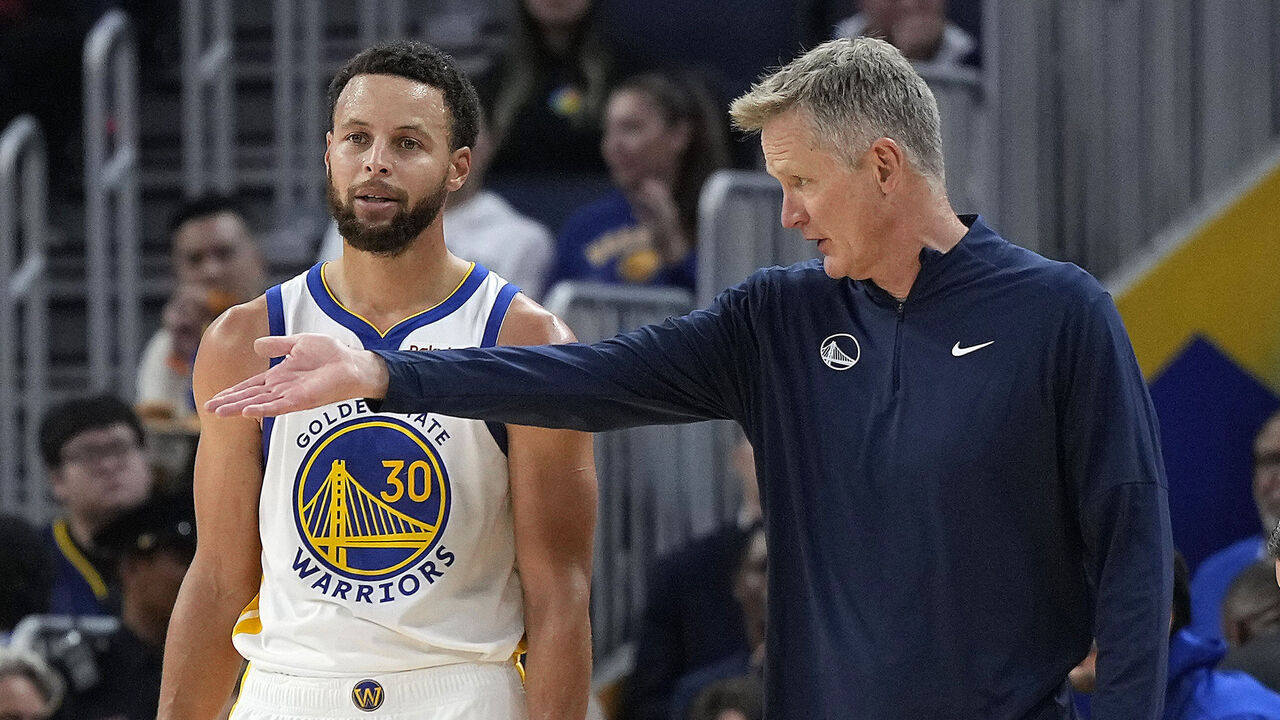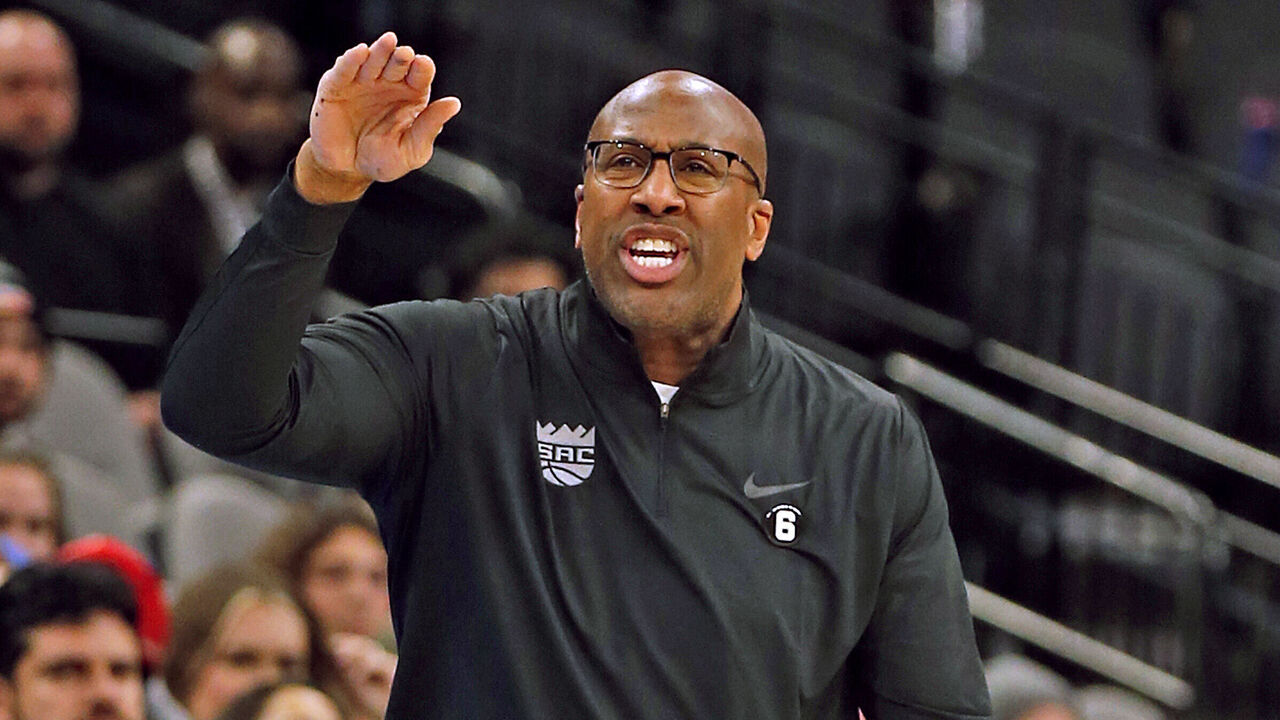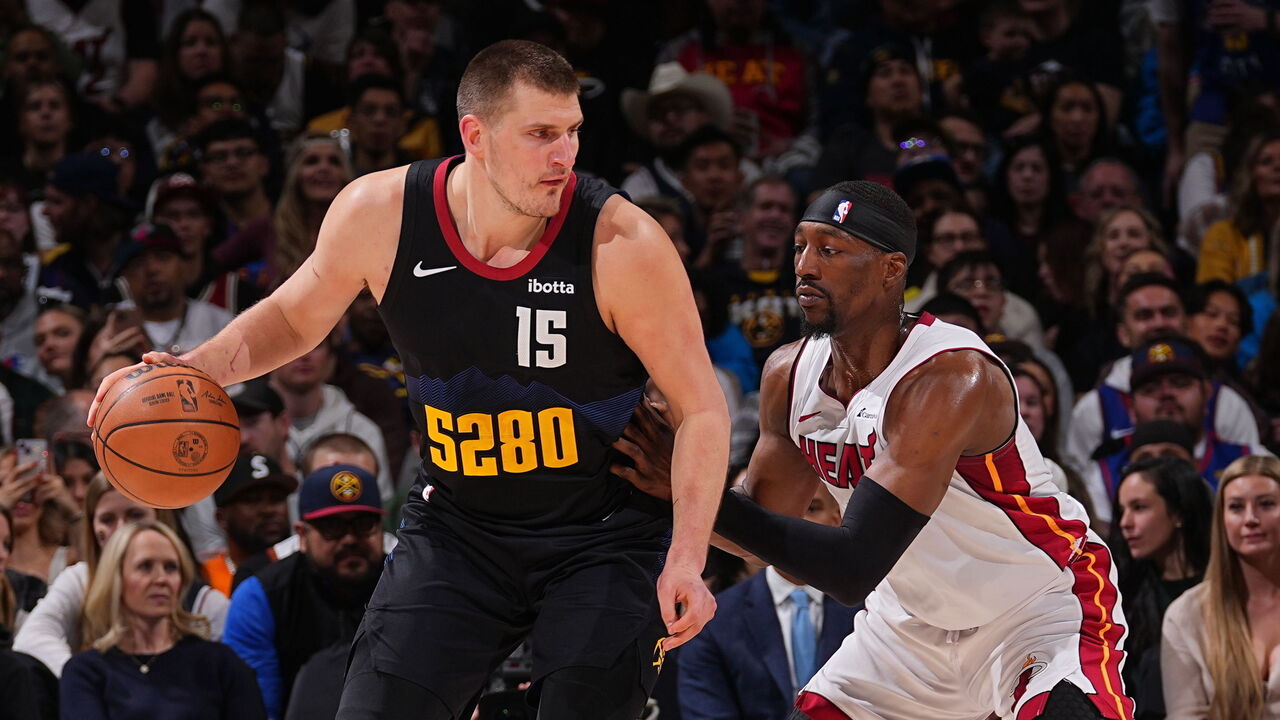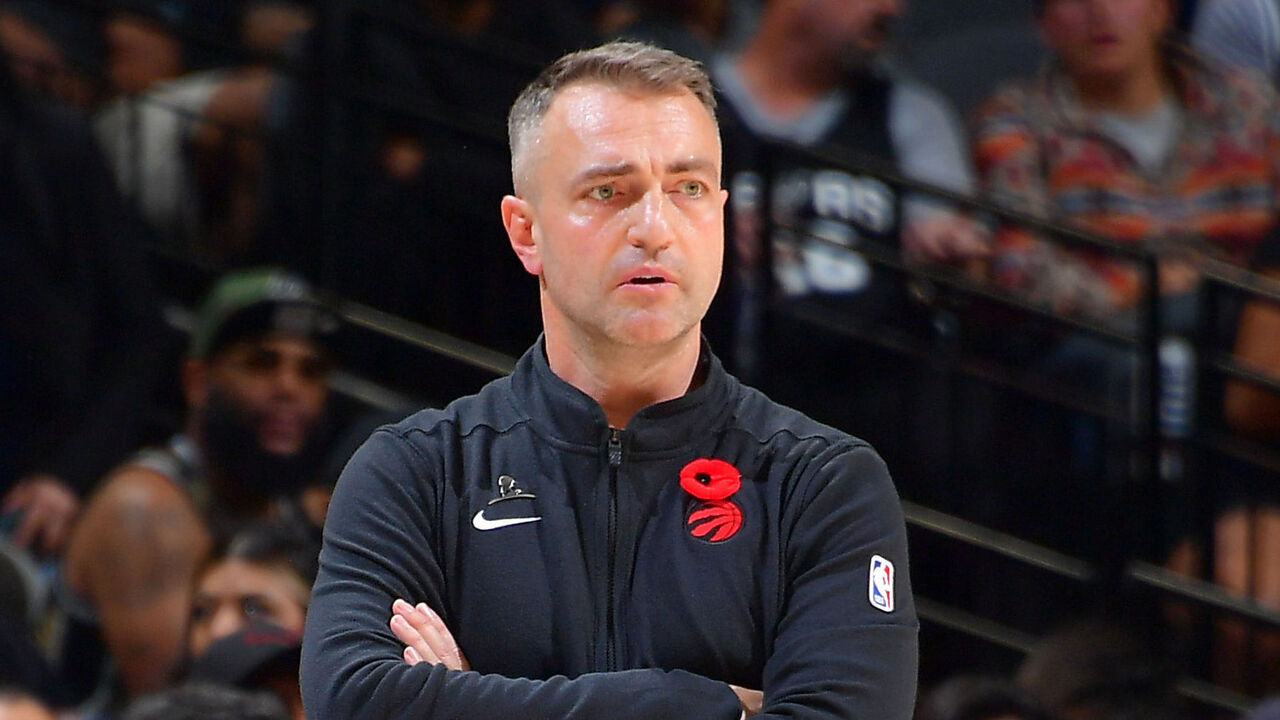How modern offenses blend old-school tactics with new-age skills
If you're a person with opinions about professional basketball, you've probably offered plenty about the state of NBA offense and the factors propelling its stratospheric rise. In terms of league-wide offensive rating, the last eight seasons have been the eight best in NBA history, and that trend line continues to point up, though the rate of acceleration has slowed.
We're long past talking about shot-location optimization, which reshaped the game beginning in the aughts. As I've noted a few times, the league's jump-shooting diet has largely held steady for the last half-decade; 3-point frequency is nearly identical now to what it was in 2019-20, per Cleaning the Glass. Long mid-range frequency has dipped slightly during the same timeframe but that's offset by a similar decline in rim rate, with a bunch of those shots being relocated to the increasingly prominent floater zone. Free-throw attempt rate has also declined.
The game isn't getting faster anymore, either; teams are actually averaging almost two fewer possessions per 48 minutes this season than they did five years ago. And still offensive efficiency keeps climbing, with the league average jumping from 110.8 to 115.8 points per 100 possessions over that span.
That's because the skill sets of the league's players, and the tactics teams employ in order to maximize them, continue to evolve. And one of the most interesting trends shaping the league's present-day offensive dynamic is a gentle shift away from pick-and-roll ubiquity.
Make no mistake, the pick-and-roll is still very much the NBA's bread-and-butter action. But after years of proliferation, it's started to become a bit less prevalent. The league is averaging 68.8 ball screens per 100 possessions in 2023-24, the second-lowest frequency of any season in Second Spectrum's 10-year database and down from 71.8 two years ago, according to a source with access to the data. More of the pick-and-rolls that do get run either materialize in the flow mid-possession, or are used to set up subsequent off-ball actions. Five years ago, the average team finished 18.9% of its possessions via pick-and-roll ball-handlers. That's down to 16.1% this season, according to NBA Advanced Stats.
Some of those numbers are attributable to drive-and-kick offenses that play 5-out and can attack without screens, but that's only a fraction of the story. In talking to coaches around the league whose teams have been at the forefront of this trend, two common threads emerged: They've tried to tailor schemes to personnel groups that increasingly feature playmaking big men and lethal movement shooters; and they've tried to wrong-foot opposing defenses with actions and rhythms that those defenses aren't accustomed to guarding.
"For us, it's always made a lot of sense to run Steph (Curry) and Klay (Thompson) off of screens, because of what that can do to the defense," said Warriors coach Steve Kerr, whose team routinely ranks at or near the bottom of the league in pick-and-roll frequency and near the top in off-ball actions.
"I always hear that we're pick-and-roll averse, but we're really not. It's just kind of the way Steph is. He's not James Harden or Luka (Doncic) where he's gonna get the shot or the assist or turnover every possession. He's much more likely to (pass early) and then run off-ball. That's been one of the things that has made us a little different and unique. And I've had a lot of coaches over the years tell me that it's hard to prepare for, because they don't see it a lot."

Kerr's fast-paced motion offense famously harnessed and melded the unique gifts of Curry, Thompson, and Draymond Green, while pinching a few concepts and actions from Gregg Popovich's late-dynasty Spurs and from the Triangle offense Kerr once played in Chicago under Phil Jackson. In that system, Green's often tasked with orchestrating from the top of the floor or the mid-post while Curry and Thompson skitter around setting screens, flying off pindowns, cutting backdoor, and warping defenses with their unparalleled 3-point gravity.
Obviously no team was going to fully replicate that formula; Golden State's trio (quartet when Kevin Durant was around) is one of one. But almost every team has borrowed bits and pieces from the Warriors' blueprint - especially their vaunted post split actions, which have become a league-wide staple.
"I know I copy a lot of stuff from around the league, I think we all copy each other," Kerr said. "And the shooting has gotten so good now across the league that I think it's only natural that teams are running more off-ball actions and trying to mix up their schemes."
One team that jumped on that trend is the Sacramento Kings, helmed by reigning Coach of the Year (and former longtime Warriors assistant) Mike Brown. Brown had notable head coaching stints with LeBron James' Cavaliers and Kobe Bryant's Lakers before taking over in Sacramento, but when it came time to devise an offensive philosophy for a De'Aaron Fox- and Domantas Sabonis-led team replete with movement shooting, he applied his experiences from being on Kerr's staff (and Popovich's before that).
"In the early 2000s when I was in San Antonio, we tried to do stuff with Tim Duncan where he just wasn't on the block all the time, because teams had been working on double-teaming the post for years," Brown said. "And there were all types of defenses that had gone through it, everybody had the rotations down. So, you try to evolve to do things that teams don't really have a chance to work on or defend a lot.
"Fast-forward to Golden State, and you got a guy like Steph, you got a guy like Klay, who don't need the ball in their hands to score. And you put the right people around them, aka Draymond, and now you're playing a style that really nobody else is playing. So you have an advantage because most of the rest of the league is working on pick-and-roll defense, because that's what they're facing night in night out, and you're playing a different style. And it was a no-brainer with Domas coming to Sacramento."

The Kings ended a 17-year playoff drought and set a record for offensive rating last year by putting everyone in motion around Sabonis, their bruising, playmaking fulcrum. This season they're running more dribble-handoffs per possession than any team in recorded history. Brown feels that setup makes it harder for defenses to load up on his guards, namely Fox and Malik Monk.
"If you have a guard and want to give him an opportunity to not be bottled up throughout the course of a seven-game series, figure out how to get him off that ball," Brown said.
Like the Warriors with Curry, Michael Malone's Denver Nuggets have something of a stylistic imperative because of Nikola Jokic's singular genius, which allowed their unique offense to take shape mostly organically. But the front office still needed the vision to put the right pieces around him, and Malone still had to draw inspiration from somewhere.
"I know for us, when I took over, the team that you wanted to copycat was San Antonio, and how they played their beautiful game - ball movement, player movement, pace, purpose," Malone said. "Golden State kind of took it from them and ran with it and had great success. And then we've tried to use that.
"But more importantly, when you have a player like Nikola, for me it was just identifying who we have, and making Nikola the focal point of everything we do. From (Jokic's second season) our team has taken off and we've had a real identity playing through Nikola, whether it be in the low post, the high post, the elbows, wherever it may be. Because that's what's best for us."
Erik Spoelstra's Miami Heat also spent years cutting against the grain, eschewing heliocentrism and endless spread pick-and-roll in favor of an egalitarian system with whirring off-ball activity. The Heat haven't been as successful at it as the Warriors or Nuggets, because they don't have Curry or Jokic, but they squeeze the most out of their personnel and always level up in the playoffs.
"It's the nature of everything, right?" Spoelstra said. "If everybody's doing the same thing, you try to find the advantages by doing something else. The league, this game, constantly evolves. And you're constantly trying to (stay ahead of the curve)."

In using center Bam Adebayo as a high-post hub with shooters and cutters zooming around him, the Heat also helped ingrain delay and DHO-centric offense in the league's fabric.
"It feels to me like almost every team is running delay stuff, which is more dribble-handoff oriented than pick-and-roll oriented," said Kerr. "You know, 5-out, where the ball is swung and then you've got a DHO on the other side. That stuff is hard to guard, and there are a lot of wrinkles you can run out of that."
It's hard to stay ahead of that curve for long. Ask Brown, who believes the rest of the league has "100%" caught up to how the Kings play already. That's partly illustrated by the fact they've slipped from first to 13th in offensive rating, while four teams are currently bettering the record they established last season.
"It's a copycat league," Brown said. "And I'm not saying I invented this, because I didn't. I learned a lot from Steve and from Steph and Draymond and Klay. I took a lot of it with me, formulated my own opinion, and formulated the offense that we're running now. (Assistant coach) Jay Triano brought in some ideas, and Luke Loucks, and we had the No. 1 offense in the history of the game last year. So, there are people that took some of it. The league has gone that way, for sure."
Copycatting doesn't only apply to the here and now; one way coaches can keep things fresh is by mining the rich repository of basketball history. Even the most cutting-edge offenses borrow heavily from age-old systems and principles, many of which were themselves invented as antidotes to the offensive sameness of their day.
"It's interesting," Kerr said. "I always think that the game evolves and gets better - skills get better, players get better - and then inevitably there's a return to principles and, you know, how the game was played 30 years (ago). We're constantly sort of going back to stuff that has worked."
Plenty of teams play out of triangle and Princeton concepts; they've just stretched the configurations out wider to encompass the 3-point line. It's a dash of old-school tactics blended with the league's new-age skill sets.
"A lot of stuff that (gets) reused offensively is part of the Princeton offense, and Princeton offense is not new in the league," explained Raptors coach Darko Rajakovic, whose own scheme features Princeton shades. "You had during the 90s (and early 2000s) Rick Adelman running that with the Kings, playing Vlade Divac at the elbows. But the game has changed so much, and the skill of the players has changed so much, it's become so hard to guard all that movement and passing and shooting."

An upshot of this stylistic shift is that the league's averaging way more assists per 100 possessions this season (27.0) than in any other season in history. The gap between this year and the next-highest assists-per-100 campaign (25.7 in 1987-88) is equivalent to the gap between '87-88 and the 22nd-ranked season on that list, per Basketball Reference. And while there's some selection bias in spotlighting a stat that depends on made field goals, we can also see that there's been a significant uptick in the proportion of baskets that are assisted.
The current median team assist rate is 63.4%, by far the highest in NBA.com's 28-year database.
Big men account for a huge chunk of that increase.
When illegal defense rules were scrapped over two decades ago, it opened a Pandora's box of zones and help concepts that set the post-up on a path of steady decline. Bigs took a while to adjust as the game migrated out to the perimeter and became increasingly hostile to back-to-the-basket scorers. But in some ways that environment helped pressurize them into the diamonds we see today.
Uber-skilled, sweet-passing centers started showing up in droves, from Jokic to Joel Embiid to Sabonis to Adebayo to Alperen Sengun to Victor Wembanyama. The first 15 years after the rule change featured only seven qualified individual seasons in which a player listed by Basketball Reference as either a center or forward/center averaged four or more assists. In the seven years since, there have been 27 such seasons.
From the high post, a team can work that DHO game or run all manner of off-ball action, orchestrated by a player who can see the whole floor. If their big man is a gifted playmaker, the team can effectively use passing and cutting in lieu of dribbling in order to get to the basket. That's how the Nuggets have managed to rank top 10 in rim frequency for the last three seasons (including fourth this year) despite ranking dead last in drives in each of those seasons (which feels all the more valuable now that officials are giving drivers a less favorable whistle).
"I think it always comes down to realizing who you have as your personnel and playing to your strengths," Malone said. "For us, that's getting the ball moving, body movement, and being unselfish. And I think a lot more teams are trying to play that way."
Of course, a team's success in playing that style still depends almost entirely on who they have at the reins. As Rajakovic said of Jokic: "He makes that offense look so much better than some other teams that are running the same offense."
The low post hasn't entirely been left behind in this evolution, either. While today's spacing environment hasn't made post-ups much more frequent, it has made them a lot more effective, both as scoring mechanisms and as playmaking vehicles.
"I think we're starting to see a little more of a post game return to the league," Kerr said. "I don't have the stats to prove that but it feels like more teams now are not afraid to go into the block. There's a lot of things you can do from the post and different ways you can attack, and because teams are so 5-out oriented now, you go down to the block and there's just less help."
Post-ups nowadays are often used as counters to switching and cross-matching, which themselves became natural defensive counters to the increasing lethality of spread pick-and-roll. The game can be cyclical like that.
Again, the pick-and-roll remains the staple food of NBA offense. The teams mentioned here still run a ton of them, and plenty of these trends sprout from pick-and-roll initiation. But, for one thing, there's more variety to pick-and-rolls now, with more of them featuring multiple screeners, guard screeners, or no real screen at all. And for another, teams just seem to have more non-PnR options on the menu.
Defenses are more sophisticated than ever, and offenses have to keep evolving in order to stay a step ahead. It's hard to predict where that evolution will take us next, but if you're seeking clues about the future, looking to the past isn't the worst place to start.